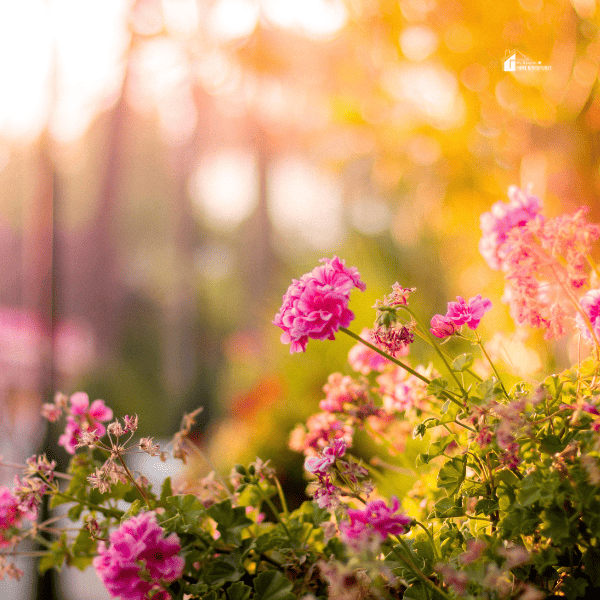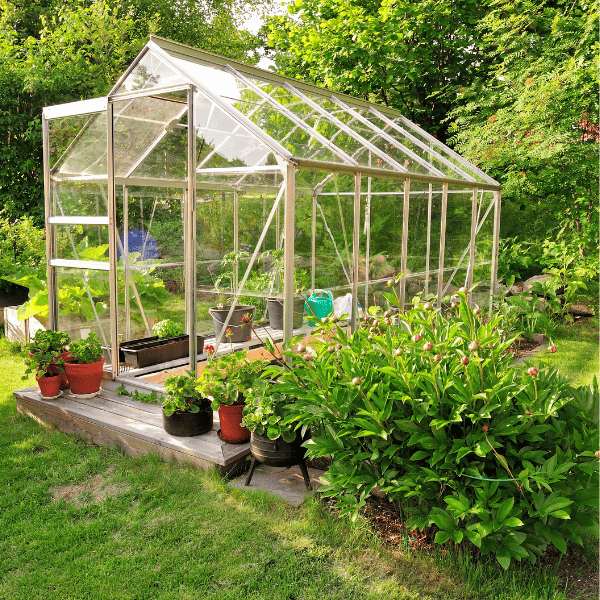10 Ways To Create A Low Maintenance Garden
This post may contain affiliate links which might earn us money. Please read my Disclosure and Privacy policies hereNot everyone has the time or energy for gardening. At the same time, many of us want to keep our backyard looking pretty. Hiring a landscaper to look after your garden for you is a solution, but it’s a solution that not everyone can afford. A better option could be to design a garden that is low maintenance. This involves investing in plants and equipment that don’t require too much intervention. Below are 10 examples of measures that you can take to create a low maintenance outdoor space.

Limit your lawn area
Lawns require a lot of upkeep. You need to water them, weed them, mow them, aerate them and fertilise them to keep them looking lush. The larger your lawn is, the more time you will spend maintaining it. It’s for this reason that many people have started reducing the size of their lawns.
Dedicating more of your garden to hard surfaces like gravel, paving or decking can help you cut down on lawn maintenance. Alternatively, you can purposefully rewild areas of lawn that aren’t being put to use. Some homeowners do away with a lawn completely. However, if you’ve got pets or kids, you’ll likely want to preserve some grass.
Choose the right grass
The type of grass used on your lawn can also have an impact on maintenance. Some types of grass can be very fussy. When designing a low maintenance lawn, consider looking for grass species that are slow-growing and more hardy. It’s best to look for a type of grass that is suitable to your local climate – some grasses like Bermuda grass thrive better in warmer climates, while the likes of Kentucky bluegrass are able to grow well in cooler regions. Unfortunately, there is no such thing as zero-maintenance grass – the closest you can get is to opt for an artificial lawn.
Opt for native plants
When choosing low-maintenance plants to grow in your garden, consider what types of plants grow naturally in your local area. Such plants shouldn’t need too much care because the local climate is already well-suited to them. For example, when choosing plants for a garden in Minnesota, you may want to consider options like bergamot, rough blazing stars and milkweed.
When choosing plants for a garden in Southern California, consider options like California poppies, yarrow and buckwheat. Visiting your local woods and seeing what plants grow there could help you to choose suitable plants. You can also find information online about which plants are native to your area – or, at the very least, which plants are grown in similar climates around the world.
Consider perennials
A perennial is any plant that lives for more than two years. They are a better option than annual plants, which only last a year and then need to be replaced. Perennials are able to survive a winter and rebloom in the spring – they are naturally hardy and therefore don’t require as much care. Examples of perennials include lavender, geraniums, irises, mint and sage.
Obviously, local climate can have an impact on a plant’s ability to survive year on year, so try to choose perennials that are native to your region. There are sites that sell wholesale plants that have huge selections of perennials to choose from
Think evergreen
If you don’t want to be clearing up leaves every winter, consider sticking to evergreen plants. These plants don’t ever lose their leaves (some may still shed needles, but these are typically not as messy as leaves). This makes evergreens a great low maintenance option. What are some examples of evergreen plants? Pines, spruces, heathers, azaleas, rhododendrons, yucca and some ferns all fit into this category.
Most evergreen plants are from cold climates and therefore grow better in cooler regions, but there are some warm climate evergreen plants too such as Indian hawthorns. Do your research to find evergreen plants that are suitable to your garden’s natural conditions.

Add mulch to soil
Adding a protective layer of compost or bark chips to the soil of your plant beds could help to reduce garden maintenance. This protective layer is known as ‘mulch’ and it can help to prevent weed growth, slow down water evaporation in hot weather and add nutrients to the soil. This can reduce the need for regular weeding, watering and fertiliser usage.
You can make your own mulch by collecting various organic debris from your garden, or you can buy packets of bark chips or straw to use as much. Whatever type of mulch you choose, make sure that you have enough to spread over all your plant beds.
Use raised beds
Growing plants in raised beds can be another way to reduce maintenance. A raised bed involves encasing soil in a raised wooden or rock container. They effectively work like giant bed-shaped pots for growing multiple plants in. Using raised beds can help to improve drainage, helping to prevent waterlogging if you live in an area that gets a lot of rain.
Raised beds are also less prone to weeds and pests because of their height. All in all, they don’t require as much upkeep as traditional beds. You can build your own raised beds or buy pallet boxes.
Automate watering
Plants need to be watered during periods of drought. Having to manually water plants or grass with a hose or watering can is time-consuming. This is why many gardeners find ways to automate watering. Sprinklers can be hooked up to your home’s mains water system or rainwater collection containers and used to automatically distribute water around your garden.
While sprinklers can be operated manually, many modern sprinklers can be set on a timer. Others are able to use smart technology to determine when best to sprinkle water on your garden. This may include using sensors to detect lack of moisture in the soil or using weather reports to determine when it hasn’t been raining. It’s worth taking your time to shop around for sprinkler systems to find the best suited one for your garden and budget.
Automate mowing
Don’t enjoy mowing the lawn? This is another task that can now be automated. Robot lawn mowers can be programmed to cut the grass for you. They are able to move themselves without being pushed or driven, using sensors to detect the perimeters of your lawn and any obstacles.
When choosing a robot mower there are a few factors to compare such as cutting width, battery life and cutting modes. Some robot mowers are quite simple, while others are more elaborate.
The latter type of mower is likely to be more expensive. If you don’t like the idea of a robot mower and currently have a push lawnmower, upgrading to a self-propelled mower or ride-on mower could still be a way to make cutting your lawn slightly easier.
It’s also worth noting that some robot mowers have the option to be remote controlled as well as being able to work automatically, giving you the option to still control them.

Keep it simple
The more complex your garden is, the more difficult it will be to maintain. Opting for a simple design with not too many different species of plants will make gardening a lot easier to manage. Avoid features like intricate pathways or ornately-shaped hedges – as pretty as these features may look when you first introduce them, they will require constant upkeep in order to stay attractive after this. A garden does not have to be elaborate to be beautiful and there is beauty in minimalism.







